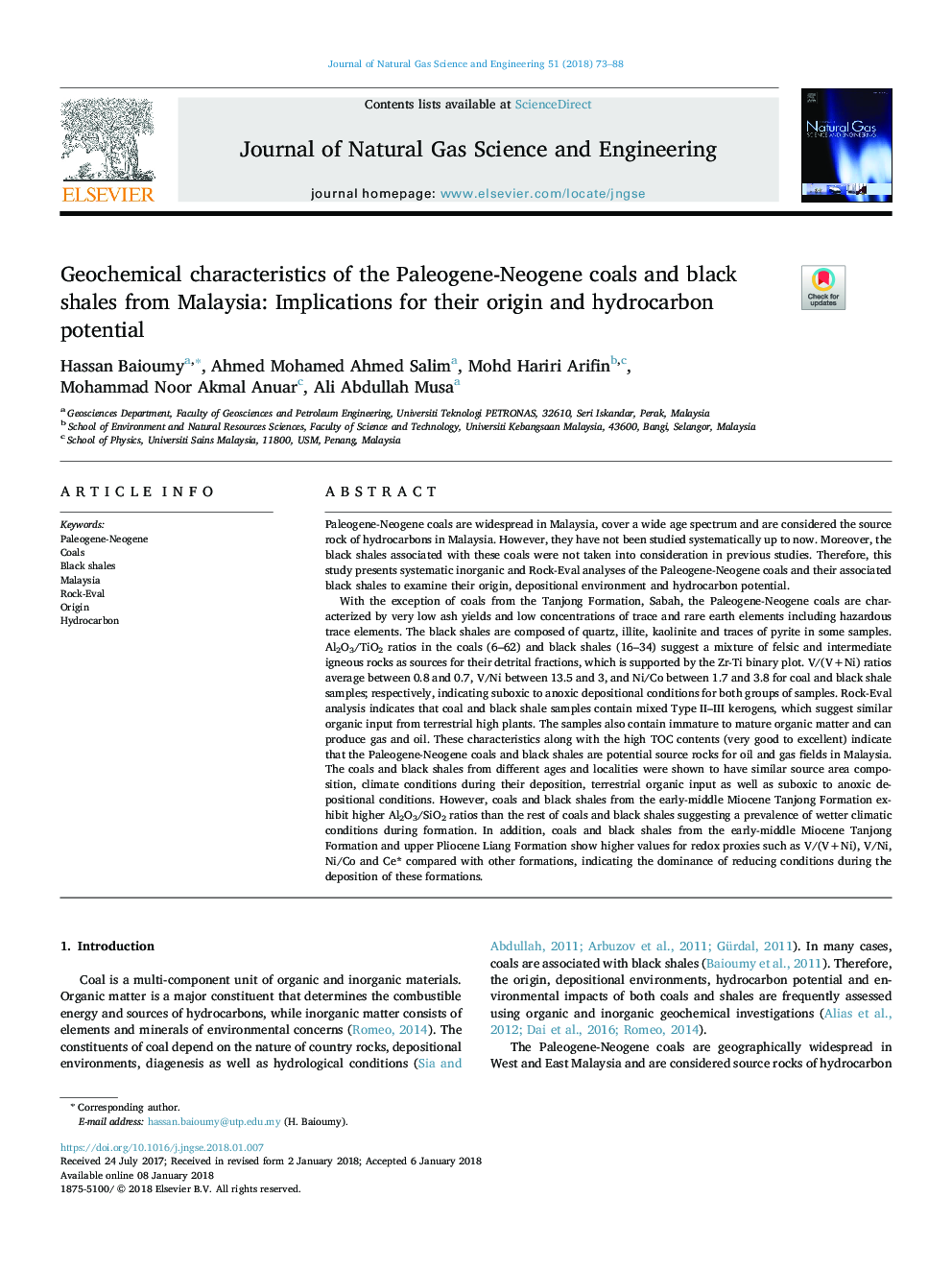| Article ID | Journal | Published Year | Pages | File Type |
|---|---|---|---|---|
| 8128325 | Journal of Natural Gas Science and Engineering | 2018 | 16 Pages |
Abstract
With the exception of coals from the Tanjong Formation, Sabah, the Paleogene-Neogene coals are characterized by very low ash yields and low concentrations of trace and rare earth elements including hazardous trace elements. The black shales are composed of quartz, illite, kaolinite and traces of pyrite in some samples. Al2O3/TiO2 ratios in the coals (6-62) and black shales (16-34) suggest a mixture of felsic and intermediate igneous rocks as sources for their detrital fractions, which is supported by the Zr-Ti binary plot. V/(V+Ni) ratios average between 0.8 and 0.7, V/Ni between 13.5 and 3, and Ni/Co between 1.7 and 3.8 for coal and black shale samples; respectively, indicating suboxic to anoxic depositional conditions for both groups of samples. Rock-Eval analysis indicates that coal and black shale samples contain mixed Type II-III kerogens, which suggest similar organic input from terrestrial high plants. The samples also contain immature to mature organic matter and can produce gas and oil. These characteristics along with the high TOC contents (very good to excellent) indicate that the Paleogene-Neogene coals and black shales are potential source rocks for oil and gas fields in Malaysia. The coals and black shales from different ages and localities were shown to have similar source area composition, climate conditions during their deposition, terrestrial organic input as well as suboxic to anoxic depositional conditions. However, coals and black shales from the early-middle Miocene Tanjong Formation exhibit higher Al2O3/SiO2 ratios than the rest of coals and black shales suggesting a prevalence of wetter climatic conditions during formation. In addition, coals and black shales from the early-middle Miocene Tanjong Formation and upper Pliocene Liang Formation show higher values for redox proxies such as V/(V+Ni), V/Ni, Ni/Co and Ce* compared with other formations, indicating the dominance of reducing conditions during the deposition of these formations.
Related Topics
Physical Sciences and Engineering
Earth and Planetary Sciences
Earth and Planetary Sciences (General)
Authors
Hassan Baioumy, Ahmed Mohamed Ahmed Salim, Mohd Hariri Arifin, Mohammad Noor Akmal Anuar, Ali Abdullah Musa,
